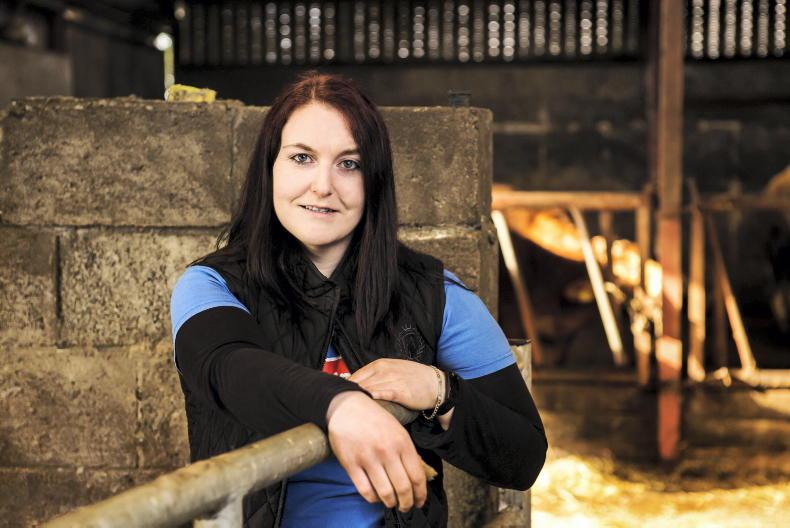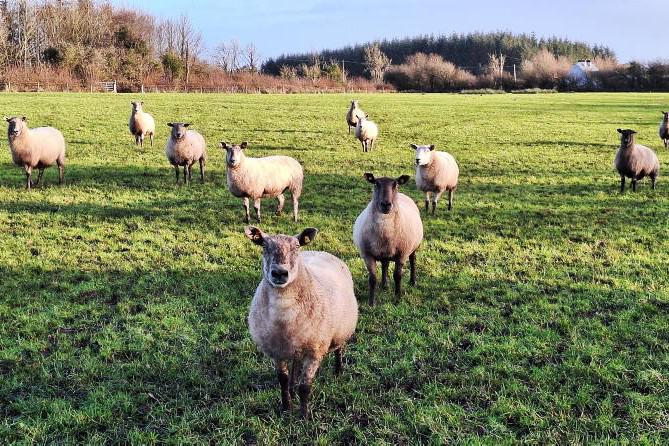Grass growth over the winter months has been positive in the main. Despite covers in some areas being hit by spells of inclement weather it has left most sheep farmers who closed fields in sufficient time in autumn in a relatively good position to build from.
While temperatures are forecast to dip in the coming days soil temperatures have been in a position capable of sustaining growth.
Timelines for applying chemical fertiliser have been pushed later in recent years with 2024 sticking solid in the minds of farmers as a disasterous spring.
Reports indicate low levels of fertiliser have been applied on sheep farms to date.
Many swards are now in a position of residual nitrogen being depleted and as such could witness growth stagnate at a time when they should be pushing on.
The aim for sheep farmers should be to capitalise where ground conditions allow to get fertiliser applied to replenish fertility and also accelerate recovery times in grazed swards.
The volume of fertiliser applied and timing will depend on the stocking rate on the farm and grass supplies.
Fertiliser advice
Teagasc advice for highly stocked enterprises with a stocking rate of upwards of 10 to 12 ewes/ha is to apply 25kg nitrogen per hectare (N/ha) (20 units per acre) in February / March.
This rises to upwards of 30kg N/ha (24 units per acre) for flocks with a stocking rate of 14 ewes/ha.
The demand is such on these farmers that where nutrients are not applied grass reserves will be depleted quickly leaving farms struggling to keep grass ahead of stock, performance suffering and supplementary feed required to help bring grazing back on track.
The advice for flocks with a lower stocking rate is to also focus on a March application of nitrogen to kick-start growth but at a lower application rate of 20kg to 23kg/ha (16 to 18.5 units per acre) while flocks stocked at six ewes/ha are recommended to apply 13kg/ha (10.5 units/acre).
Farmers working off the Teagasc fertiliser application blueprint or factsheet for sheep flocks need to be mindful to the fact that application rates recommended will be revised this year to take account of reduced chemical nitrogen limits introduced as part of the recent review of Ireland’s fifth Nitrates Action Programme.
Targeted application
The optimum practice at this stage of the year is to apply a blanket application to get nutrients applied to all areas.
However, where this is not possible due for example to soils not being trafficable, then it is still beneficial to target areas where fertiliser can be applied.
Targeting reseeded or younger swards with a higher percentage of perennial ryegrass and soils with optimum soil fertility will also deliver a better return on your investment.
When on the subject of soil fertility, lower volumes of phosphorus (P) and potassium (K) have been applied in recent years due to the higher cost of fertiliser.
Soils which have their fertility depleted will benefit from the application of P and K and this can generally commence from April onwards.
Consideration should also be given to applying lime to address any soil pH deficiency with lime still capable of delivering a multiple return on your investment even though costs have crept upwards.
Organic fertilisers
Use should also be made of organic fertilisers to address soil fertility issues and in particular to replenish nutrients which have been removed through crop offtakes.
If conditions allow, and slurry is available, there is significant merit in applying slurry on swards with low grass covers and chemical fertiliser on swards with a higher cover of grass.
Grass demand
If not already complete,producers should at least walk their farm to gauge grass supplies and allow pans to be put in place. The target opening average farm cover for medium-to-highly stocked March lambing flocks is in the region of 600kg DM/ha to 650kg DM/ha.
This information, along with monitoring growth rates is invaluable in budgeting available grass and taking steps to conserve supplies.
A ewe’s grass intake demand if offered sufficient supplies is approximately 2.4kg DM/ha to 2.5kg DM per day.
This increases for a twin suckling ewe to 3.2kg DM in week five and 3.4kg DM in week seven of lactation and eases off thereafter following peak milk. From here until weaning it remains pretty static.
Establishing the volume of grass in a field and the average grass growth rate will allow farmers to budget grass supplies to demand.
For example if we take 10 ewes grazing with a grass demand of 2.5kg DM/ha, the daily demand is 25kg DM.
Take a paddock with 7cm grass height on average across a sward, or 1,050kg DM/ha, there is enough grazing in theory for 42 days or put differently there is just over eight days grazing for 50 ewes and their lambs without taking current growth into account. If grass supplies are running behind target and there are challenges in getting fertiliser applied then the next task may be to consider supplementing ewes in early lactation to conserve supplies.










SHARING OPTIONS